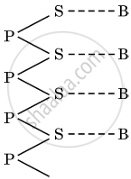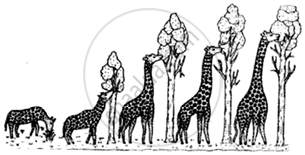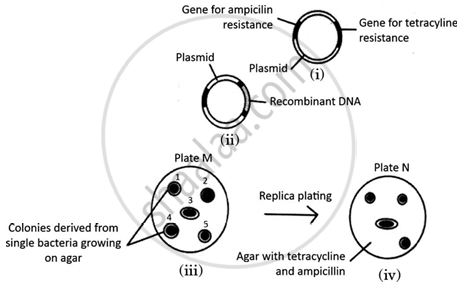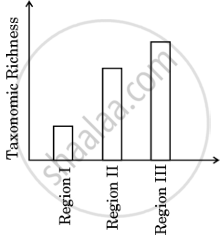Science (English Medium)
Academic Year: 2023-2024
Date & Time: 19th March 2024, 10:30 am
Duration: 3h
Advertisements
General Instructions:
Read the following instructions carefully and follow them:
- This question paper contains 33 questions. All questions are compulsory.
- Question paper is divided into five sections - Sections A, B, C, D and E.
- Section A - questions number 1 to 16 are multiple choice type questions. Each question carries 1 mark.
- Section B - questions number 17 to 21 are very short answer type questions. Each question carries 2 marks.
- Section C - questions number 22 to 28 are short answer type questions. Each question carries 3 marks.
- Section D - questions number 29 and 30 are case-based questions. Each question carries 4 marks. Each question has subparts with internal choice in one of the subparts.
- Section E - questions number 31 to 33 are long answer type questions. Each question carries 5 marks.
- There is no overall choice. However, an internal choice has been provided in Sections B, C and D of the question paper. A candidate has to write answer for only one of the alternatives in such questions.
- Kindly note that there is a separate question paper for Visually Impaired candidates.
- Wherever necessary, neat and properly labelled diagrams should be drawn.
In which of the following plants are both male and female flowers born on the same plant and the mode of pollination can be geitonogamy or xenogamy?
Papaya
Date Palm
Maize
Spinach
Chapter:
Which one of the following hormones is secreted by the human placenta that helps in the maintenance of pregnancy?
Relaxin
Human Chorionic Gonadotropin
Oxytocin
Human Placental Lactogen
Chapter:
The periodic abstinence by a couple for family planning should be from ______.
Day 5 to 10 of menstrual cycle
Day 13 to 15 of menstrual cycle
Day 10 to 17 of menstrual cycle
Day 16 to 20 of menstrual cycle
Chapter:
Select the incorrect match from the following:
| Human Karyotype | Characters | |
| 45 + XX | - | Broad palm with characteristic palm crease |
| Human Karyotype | Characters | |
| 44 + XXY | - | Overall feminine development |
| Human Karyotype | Characters | |
| 44 + XO | - | Sterile females as ovaries are rudimentary |
| Human Karyotype | Characters | |
| 44 + XY | - | Normal male |
Chapter:
You know that there are twenty different types of naturally occurring amino acids and four different types of bases in the DNA. A combination of 3 such bases code for a specific amino acid. If instead there are 96 different amino acids and 12 different bases in the DNA, then the minimum number of combination of bases required to form a codon is ______.
6
8
2
4
Chapter:
The type of bond represented by the dotted line '------' in a schematic polynucleotide chain is ______.

Hydrogen bond
Peptide bond
N-glycosidic linkage
Phosphodiester bond
Chapter:
In which of the following conditions/diseases is there a substantial increase in the activity of mast cells observed in the human body?
Typhoid
Allergy
Ascariasis
AIDS
Chapter:
Lactobacillus that sets milk into curd is categorised as ______.
Cyanobacteria
Archaebacteria
Chemosynthetic bacteria
Heterotrophic bacteria
Chapter:
Which one of the following transgenic animals is being used to test the safety of the polio vaccine?
Sheep
Goat
Pig
Mice
Chapter:
Restriction Endonuclease - Hind II always cuts DNA molecules at a particular point by recognising a specific sequence of ______.
Six base pairs
Four base pairs
Seven base pairs
Three base pairs
Chapter:
The improved trait that is found in the genetically modified transgenic crop - Golden rice is ______.
High lysine content
Insect resistant
High protein content
High vitamin-A content
Chapter:
The rate of formation of new organic matter by consumers, and the biomass available for consumption of herbivores as well as decomposers are referred to as ______.
Gross primary productivity and Net primary productivity
Net primary productivity and Secondary productivity
Secondary productivity and Net primary productivity
Secondary productivity and Gross primary productivity
Chapter:
Assertion (A): The laws of our country permit legal adoption and it is as yet, one of the best methods for childless couples looking for parenthood.
Reason (R): Emotional, religious and social factors are no deterrents to the legal adoption of orphaned and destitute children in India.
Both Assertion (A) and Reason (R) are true and Reason (R) is the correct explanation of the Assertion (A).
Both Assertion (A) and Reason (R) are true, but Reason (R) is not the correct explanation of the Assertion (A).
Assertion (A) is true, but Reason (R) is false.
Assertion (A) is false, but Reason (R) is true.
Chapter:
Assertion (A): Linked genes do not show dihybrid F2 ratio 9 : 3 : 3 : 1.
Reason (R): Linked genes do not undergo independent assortment.
Both Assertion (A) and Reason (R) are true and Reason (R) is the correct explanation of the Assertion (A).
Both Assertion (A) and Reason (R) are true, but Reason (R) is not the correct explanation of the Assertion (A).
Assertion (A) is true, but Reason (R) is false.
Assertion (A) is false, but Reason (R) is true.
Chapter:
Assertion (A): Agrobacterium tumefaciens is a pathogen of several monocot plants.
Reason (R): It is able to deliver a piece of DNA known as 'T-DNA' to transform normal plant cells into a tumor.
Both Assertion (A) and Reason (R) are true and Reason (R) is the correct explanation of the Assertion (A).
Both Assertion (A) and Reason (R) are true, but Reason (R) is not the correct explanation of the Assertion (A).
Assertion (A) is true, but Reason (R) is false.
Assertion (A) is false, but Reason (R) is true.
Chapter:
Assertion (A): Indian Government has set up an organisation known as GEAC to decide the validity of GM research.
Reason (R): Genetic modification of organisms has no effect when such organisms are introduced in the ecosystem.
Both Assertion (A) and Reason (R) are true and Reason (R) is the correct explanation of the Assertion (A).
Both Assertion (A) and Reason (R) are true, but Reason (R) is not the correct explanation of the Assertion (A).
Assertion (A) is true, but Reason (R) is false.
Assertion (A) is false, but Reason (R) is true.
Chapter:
Identify A, B, C and D in the table given below:
| Terms | Part of the plant it represents |
| Pericarp | 'A' |
| 'B' | Cotyledon in seed of grass family |
| Embryonal axis | 'C' |
| 'D' | Remains of nucellus in a seed |
Chapter:
Observe the picture given below. Name the naturalist and write the explanation given by him that evolution of life forms had occurred on the basis of this example.

Chapter:
Write the basic steps followed in the Assisted Reproductive Technologies (ART) programme to help childless couples.
Chapter:
Why Assisted Reproductive Technologies (ART) is also known as test tube baby programme?
Chapter:
Advertisements
| A farmer while working on his farm was bitten by a poisonous snake. He was rushed to a nearby health centre where the doctor gave him an injection to save his life. |
- What did the doctor inject and why? (1.5)
- Name the kind of immunity provided by this injection. (0.5)
Chapter:
Why do organic farmers not recommend complete eradication of insect pests? Explain giving reason.
Chapter:
Study the diagram of a pyramid of biomass given below. Name the two standing crops that could be occupying level 'A' and level 'B in it. Name this type of pyramid and the ecosystem in which it is found.

Chapter:
Explain the mode of action of contraceptive pills taken by human females.
Chapter:
A woman has certain queries as listed below, before starting with contraceptive pills. Answer them.
What schedule should be followed for taking these pills?
Chapter: [0.03] Reproductive Health
Name and write two characteristics of the type of DNA that forms the basis of DNA fingerprinting technique.
Chapter:
Give the applications of DNA fingerprinting technique.
Chapter: [0.05] Molecular Basis of Inheritance
- Explain the significance of the experiment carried out by S.L. Miller. Name the scientists whose hypothesis prompted him to carry out this experiment. (2.5)
- How does meteorite analysis favour this hypothesis? (0.5)
Chapter:
Identify A, B, C, D, E and F in the table given below:
| Name of Human Disease | Causative Organism | Symptoms |
| Pneumonia | Streptococcus | 'A' |
| Typhoid | 'B' | High fever, weakness, headache, stomach pain |
| Common cold | Rhino virus | 'C' |
| Ringworm | 'D' | Dry scaly lesions on body parts, redness, itching |
| Ascariasis | Ascaris | 'E' |
| 'F' | Entamoeba histolytica | Constipation, cramps, stools with mucous and blood clots |
Chapter:
In a family, the father, the daughter and the son are colour blind, whereas the mother has normal vision. Do you think the son and the daughter have inherited the disease from their father? Work out a cross to justify your answer.
Chapter:
What are transgenic animals?
Chapter: [0.1] Biotechnology and Its Application
Name the first transgenic cow and state its importance.
Chapter:
With the help of an illustration only, show the action of EcoRI on a DNA Polynucleotide.
Chapter:
- Explain how it is ensured that the orchid Ophrys is pollinated by a specific species of bee.
- Describe co-evolution with the help of this example.
Chapter:
Advertisements
Read the following passage and answer the questions that follow.
|
Isn't it incredible that India’s land area is only 2.4 percent of the world’s total land area whereas its share of the global species diversity is an impressive 8.1 percent! However, in these estimates of species, prokaryotes do not figure anywhere. Biologists are always keen on collecting data with respect to species diversity observed in different regions of the world. The data collected based on the survey conducted for species richness of groups of mammals in three different regions of the world is shown in the bar graph given below:
|
(a) Why is the species richness maximum in Region III in the bar graph? (1)
OR
(a) Why is the species richness minimum in Region I in the bar graph? (1)
(b) Plants and animals do not have uniform diversity in the world but show rather uneven distribution. Mention what this kind of diversity is referred to as. (1)
(c) Why is it that prokaryotes do not have an estimated number of their species diversity as seen in plants and animals? Explain. (2)
Chapter:
Study the diagram given below that shows the steps involved in the procedure of selecting transformed bacteria and answer the questions that follow:

(a) Identify the colony that has got transformed. Justify your answer. (0.5 + 0.5)
(b) What are the sites in a plasmid called where ampicillin and tetracycline resistance genes are inserted? State their role in genetic engineering. (2)
(c) Name two enzymes playing an important role in genetic engineering. (1)
OR
(c) State the role of β-galactosidase in insertional inactivation. (1)
Chapter:
Explain the development of male gametophyte in angiosperms (diagram is not expected).
Chapter: [0.01] Reproduction in Organisms
Draw a labelled diagram of a three-celled male gametophyte.
Chapter:
Draw a diagrammatic sectional view of ovary of human female and label the following:
- Blood vessels
- Primary follicle
- Tertiary follicle
- Ovum
Chapter:
At which stage of life are primary follicles formed in a human female?
Chapter:
Explain the events (both hormonal and structural) that occur at the time of ovulation till the onset of the next menstrual cycle.
Chapter:
Stability, as one of the properties of genetic material, was very evident in one of the very early experiments in genetics. Name the scientist and describe his experiment. State the conclusion he arrived at.
Chapter:
A tall pea plant bearing violet flowers with unknown genotype is given. Find the genotype by working out different crosses only by selfing the plants. Write the genotypic and phenotypic ratios of each cross shown by you.
Chapter:
Name and explain the property present in normal cells but is lost in cancer cells.
Chapter:
All normal human cells have genes that may become cancerous under certain conditions. Name them and explain how.
Chapter:
State the role of the following techniques in detection and diagnosis of cancer:
Biopsy and Histopathology
Chapter:
State the role of the following techniques in detection and diagnosis of cancer:
Magnetic Resonance Imaging
Chapter:
| Large quantities of sewage are generated every day in cities as well as in towns and are treated in Sewage Treatment Plants (STPs) to make them less polluting. Given below is the flow diagram of stages of STP. |
Study the flow diagram and answer the questions that follow:

-
- Why is primary effluent passed into large aeration tanks? [1]
- What is the 'sediment' formed, referred to as? Mention its significance. [1]
- Explain the final step in the settling tank before the treated effluent is released into water bodies. [1]
- Name any two organisms commonly used as biofertilisers, belonging to different kingdoms. Write how each one acts as a biofertiliser. [2]
- Many patterns of inheritance deviate considerably from the pattern of inheritance as explained by Mendel. List any four such inheritance patterns and explain any three with the help of an example each.
Chapter:
Other Solutions
Submit Question Paper
Help us maintain new question papers on Shaalaa.com, so we can continue to help studentsonly jpg, png and pdf files
CBSE previous year question papers Class 12 Biology with solutions 2023 - 2024
Previous year Question paper for CBSE Class 12 -2024 is solved by experts. Solved question papers gives you the chance to check yourself after your mock test.
By referring the question paper Solutions for Biology, you can scale your preparation level and work on your weak areas. It will also help the candidates in developing the time-management skills. Practice makes perfect, and there is no better way to practice than to attempt previous year question paper solutions of CBSE Class 12.
How CBSE Class 12 Question Paper solutions Help Students ?
• Question paper solutions for Biology will helps students to prepare for exam.
• Question paper with answer will boost students confidence in exam time and also give you an idea About the important questions and topics to be prepared for the board exam.
• For finding solution of question papers no need to refer so multiple sources like textbook or guides.

